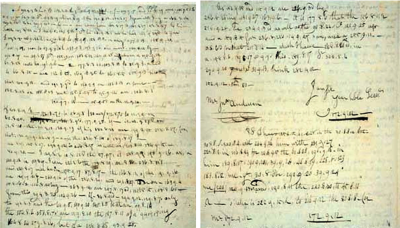
A special form of carbon paper is used as a modern form of invisible ink. A spy lays the carbon paper on another piece of paper and writes his message. His handwriting is transferred invisibly onto the paper underneath, and can only be revealed when treated with a chemical. So it is possible to send messages by post ‘written’ on the pages of, say, women’s magazines.
This method was used by the Czechoslovakian spy Erwin van Haarlem, who in 1989 was jailed for ten years for his espionage activities in Britain. Since 1975 he had sent some 200 secret messages to his spymasters in Prague – many of them in invisible ink. The information included facts about British firms working on American’s Star Wars defence system.
Most chemical invisible inks need a second liquid – known as the reagent – to make them visible. One of the most popular inks is copper sulphate diluted with water. When the paper is later immersed in a weak solution of sodium carbonate (washing soda) and water, or ammonia and water, the writing appears blue.
A particularly sensitive chemical ink used by German spies during the Second World War involved chemicals used in photography. The ink was a solution of lead nitrate and water. The reagent was a small amount of sodium sulphide in water. It produces a shiny black print.
It was a crystal of concentrated invisible ink chemical, concealed in a hollow key that led a Second World War German spy, Oswald Job, to the scaffold. The ingenious hiding place was discovered when job was searched, and it led to his confession and execution in 1944.
Picture Credit : Google

